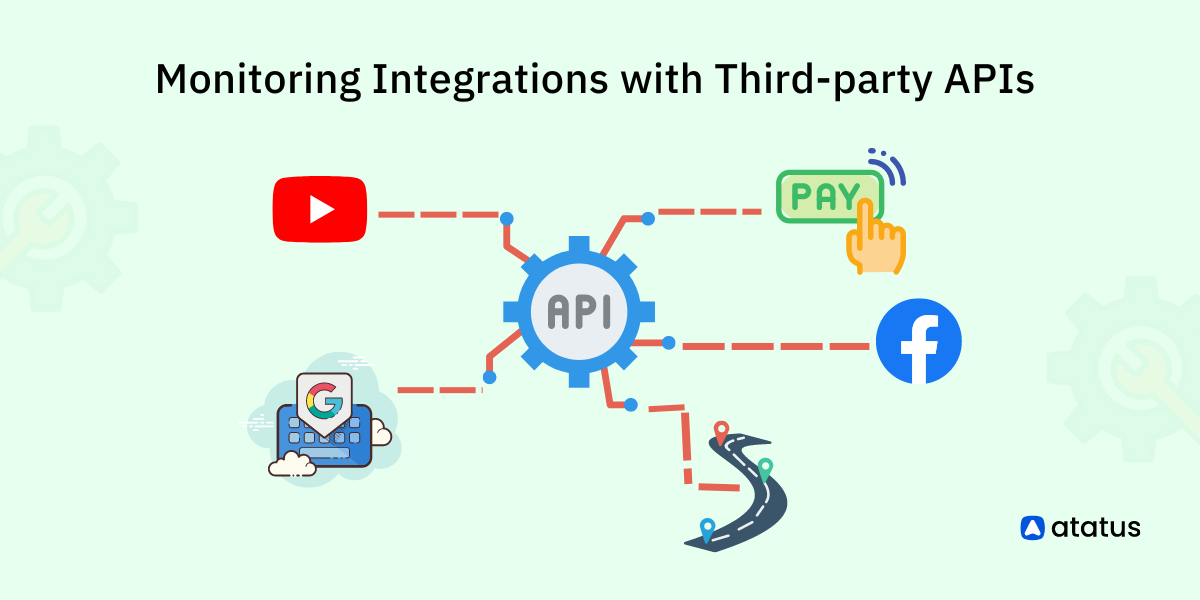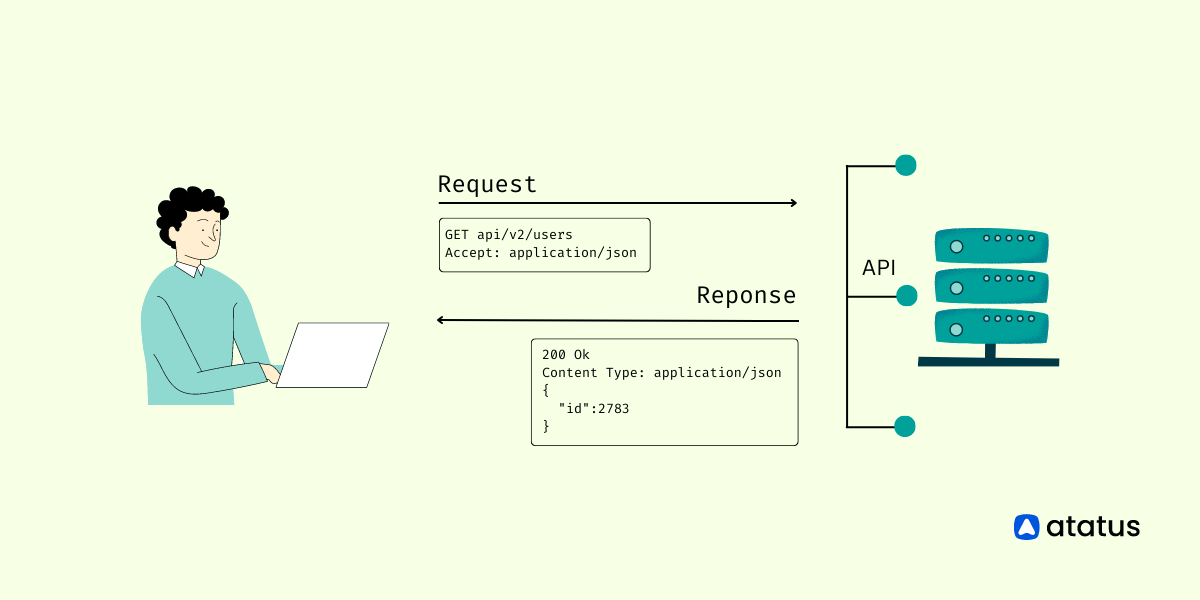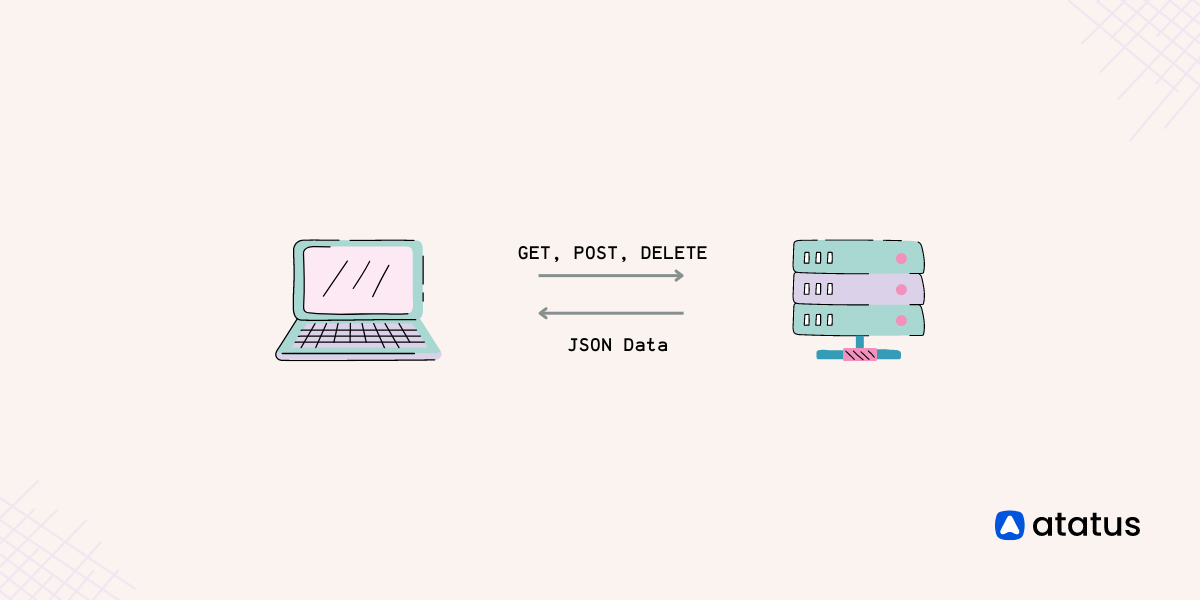Monitoring Integrations with Third-party APIs
Accessorizing can completely turn around your look. Same way, the apps we make may also feel patchy sometimes, but then, if we bring in third-party resources - such as third-party API integrations, it can drastically enhance our application’s performance.
These additional API integrations expand the functionality of your application tremendously, for example, you might add a real-time alerting feature to an analytics tool you built! Displaying custom maps from google on your page or even displaying a Twitter stream on your blog. They have certainly helped us improve our product offering and thereby improved customer satisfaction.
Now, what these API integrations do for us is a completely different story, but amidst all this are we missing out on something important? Are we compromising our application and our customers to some vile web threats?
Let's look at the following topics:-
- What is an API?
- What are third-party APIs?
- How does a third-party API work?
- Benefits of third-party APIs
- What is an API monitoring?
- Why do we need to monitor third-party APIs?
- How to monitor API integrations using Atatus?
- Metrics to be monitored
What is an API?
An API, or Application Programming Interface, is a piece of software that allows two applications to communicate data without requiring either side to comprehend the other's internal workings. Each API has a web address, which is referred to as an API endpoint, and serves as the communication channel between a consuming application and the API.
APIs aren’t just limited to web services, they are equally useful for a database system, operating system or even for computer hardware and software for that matter. For example, a mobile app might use an API provided by a weather service to retrieve current weather data, or a website might use an API provided by a payment gateway to process transactions.
What are third-party APIs?
Third-party APIs are external functionalities provided by large firms ( usually, not exclusively) so that we can use their data or software for our programs. They are loaded on third-party servers and in order to access them we have to install their JS library in our program or connect the functionality separately.
Since these APIs are accessed by a whole lot of outsiders, developers secure them with API keys. These API keys allow only developers to obtain the corresponding API functionality, thus protecting the API vendor.
For example, if a software company wants to incorporate maps into their application, it could use a third-party API provided by a mapping service such as Google Maps. The software company would then make API calls to the Google Maps API to retrieve map data and display it in their application.
Third-party APIs can be useful for adding functionality to an application without having to develop it from scratch. However, it's important to carefully consider the reliability and security of the third-party API before integrating it into an application.
Most popular third-party APIs for businesses
Third-party API integrations are utterly common in both web-based and mobile applications. The big techs have made some of their premium features available for novice developers like:
- Google’s geolocator maps - Uber uses google map’s mapping API for transportation facilities
- YouTube - Several blog just provide video links when the video is directly hosted by YouTube. This reduces server load on your software as well as makes it easier to view analytics.
- Google analytics - Website uptime, the number of visits, clicks per minute etc. can be visualized using Google's analytics software.
- Facebook - You would usually give your Facebook profile for a login to any site if asked for as it is simple, avoids data duplication and makes data sharing and account management easier.
- Payment APIs - Most of the time, shopping websites don't host their own payment interface, they simply integrate a third party payments gateway like the Google Pay or PayPal, etc.
These general APIs are of umpteen importance when you are just beginning in the DevOps arena, building big ideas and turning them to reality slowly.
How does a third-party API work?
The third-party APIs are solely maintained by their parent company, connection is enabled through developer keys and conversations through HTTP requests.
It would be great if we had an understanding of how they operate when we integrate them into our applications.
Here is how a third-party API workflow pans out:
- Research: The first step in using a third-party API is to research and identify the API that best meets your needs. This typically involves reviewing the API documentation and exploring the available features and capabilities.
- Sign up: In most cases, you will need to sign up for an account with the API provider in order to access the API. This typically involves providing some basic information, such as your name and email address, and agreeing to the terms of service.
- Obtain an API key: Many APIs require an API key in order to use the API. This is a unique string of characters that is used to identify you as the API user. You may need to request an API key from the API provider or generate one through the API developer portal.
- Test the API: Once you have an API key, you can test the API by making a request to the API and seeing how it responds. This typically involves writing some code that makes a request to the API and processes the response.
- Integrate the API into your application: Once you have tested the API and are satisfied with its functionality, you can integrate it into your application. This typically involves writing additional code to make use of the API in your application.
- Monitor and Maintain: After integrating the API into your application, it's important to monitor the API and ensure that it is functioning as expected. This may involve tracking API usage, monitoring performance, and addressing any issues that arise.
This process can vary depending on the specific API and the needs of your application.
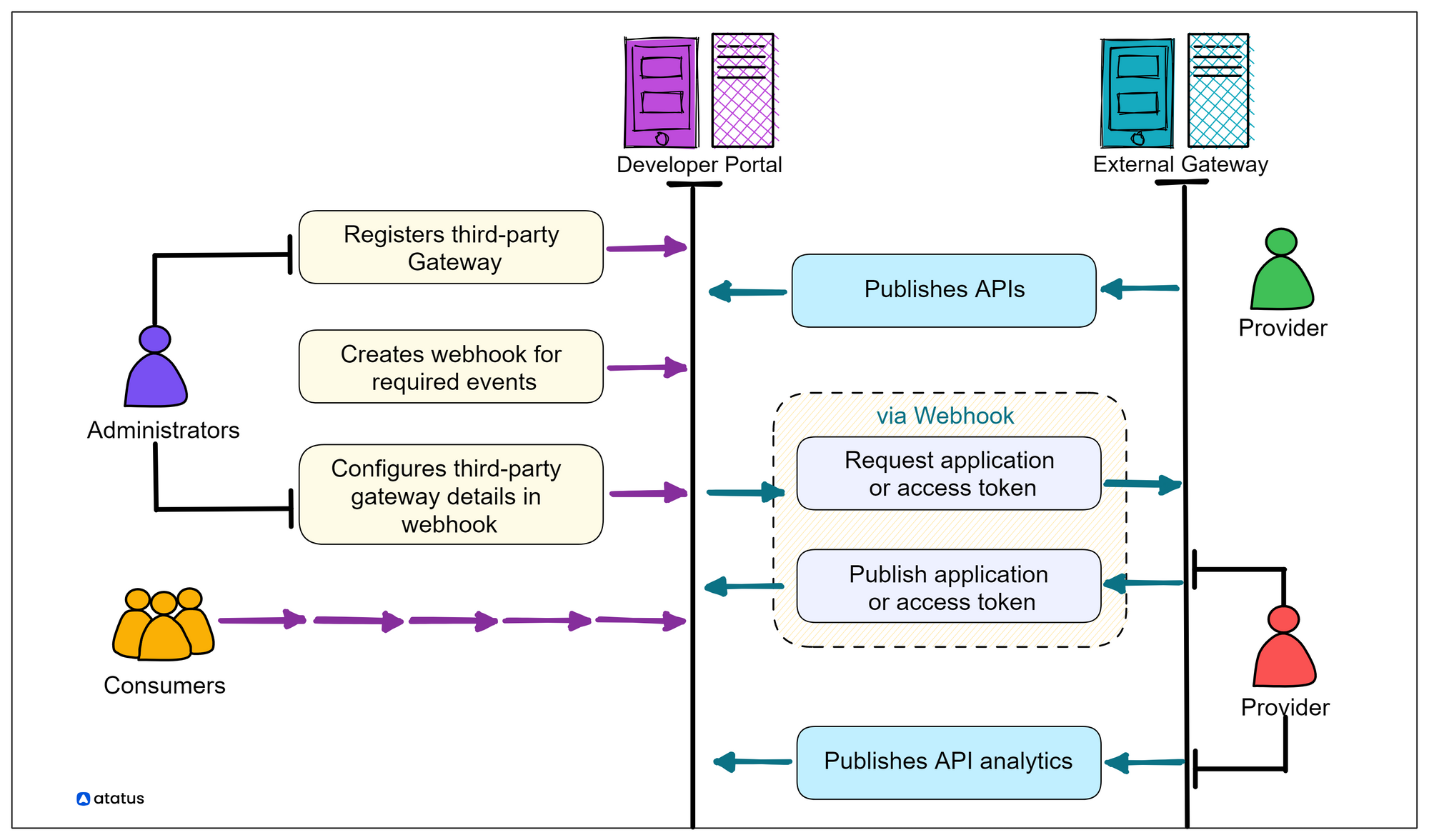
Benefits of third-party APIs
There are several benefits to using third-party APIs in software development:
- Access to a wide range of functionality and data: Allow developers to access a wide range of functionality and data that would be difficult or time-consuming to build themselves. This can save time and resources, and allow developers to focus on the core features of their applications.
- Ease of integration: Third-party APIs are typically well-documented and easy to integrate into existing software applications. This can make it easier to add new features and functionality to an application without having to build everything from scratch.
- Improved scalability: It can provide scalable solutions for tasks that would be difficult to scale in-house. For example, a social media API could allow developers to easily add social media functionality to their application without having to worry about the underlying infrastructure.
- Improved security: Third-party APIs can offer improved security compared to building custom solutions. This is because the API provider is responsible for maintaining and securing the API, freeing developers from having to worry about these tasks.
- Increased reliability: Developed and maintained by teams of professionals, which can increase the reliability of the API compared to custom solutions.
- Cost savings: Using third-party APIs, can save money compared to building custom solutions, as developers do not have to invest in the infrastructure and resources required to build and maintain the API themselves.
What is API monitoring?
You may have embedded a lot of APIs to your application and it may be doing a good job as well. But you cannot deny the fear of a sudden breakdown or storage outage.
This is when you start considering about API monitoring!
API monitoring involves gathering and evaluating data on API metrics and the health of the working API so as to identify the blockhead in its functioning. In modern systems, many smaller microservices are used rather than a few large ones, and a poorly performing microservice can negatively affect an application's performance as a whole.
Well, just saying it won't suffice, we will guide you through the adequate steps required to maintain a healthy API integrated system:
- Decide what to monitor - It can be API routes, functions, processes or services. It can also be all of these but firstly. be sure of what you want to monitor.
- Decide on the metrics - The next step is to decide which metrics you want to monitor; it can be uptime, latency, CPU usage, memory usage or how long your APIs are retained.
- Decide on the requests - The monitoring tool must produce apt API requests that are identifiable, like location, response size etc.

Why do we need to monitor third-party APIs?
To handle all your own code, perhaps you've set up an APM, logging tools, and tests. What happens when a third-party API goes down? When it stays up but sluggish enough that your dependent services begin to crash as a result, what happens when it stays up but slows down?
Let's look at the reasons why monitoring third-party APIs is vital:
- Inconsistent or low-performing API requests can be identified by monitoring for latency trends in your application.
- Not all APIs are always necessary! Yes, you might have added some of them when you were experiencing a certain deprecation and then after a while you have sorted it out and now no longer require that API's assistance. Monitoring APIs usage track allows to allocate resources in an orderly manner and weed out “dead” APIs.
- A circuit breaker can go a long way in ensuring fallback options when your APIs fail abruptly.
- There have been several reports of API downtime these past years - outages in Box, partial degradations in Stripe's API, increased errors with Facebook's GraphQL API, and countless others. All so when they are literally APIs managed by big firms.
All these reasons point out to just one conclusion - "Better late than never".
Your application may be working seamlessly with all those extra APIs, but it is crucial to observe and monitor them throughout for a sustained good performance.
How to monitor API integrations using Atatus?
We have discussed about third-party integrations and the importance of monitoring them this whole time. Now we will discuss an optimum tool that will make our jobs easier:
Atatus is one of the best API monitoring tools available in the market today. It seamlessly monitors the performance of your application websites, browsers and infrastructure. Atatus uses RESTful API to see and get data.
API analytics gives you a deep understanding of API usage and customer behaviour in your application. With this, you can keep track of all the API calls and understand how your API is being used, how you can view and rerun each API against your server. You get a complete insight of where, who, how they access your application.
To monitor your external API integrations using Atatus API Analytics you may use the following steps:
- Sign up for an Atatus account, choose the product APM and select the back-end language that you have used in your web application.
- Name your application and click Continue.
- Configure the Atatus agent to collect metrics from the system, including the third-party API integrations.
- Use the Atatus dashboard to see how your API integrations are working.
- Set up alerts to notify incase of any latency or other boggling issues and take necessary action to save your programs!
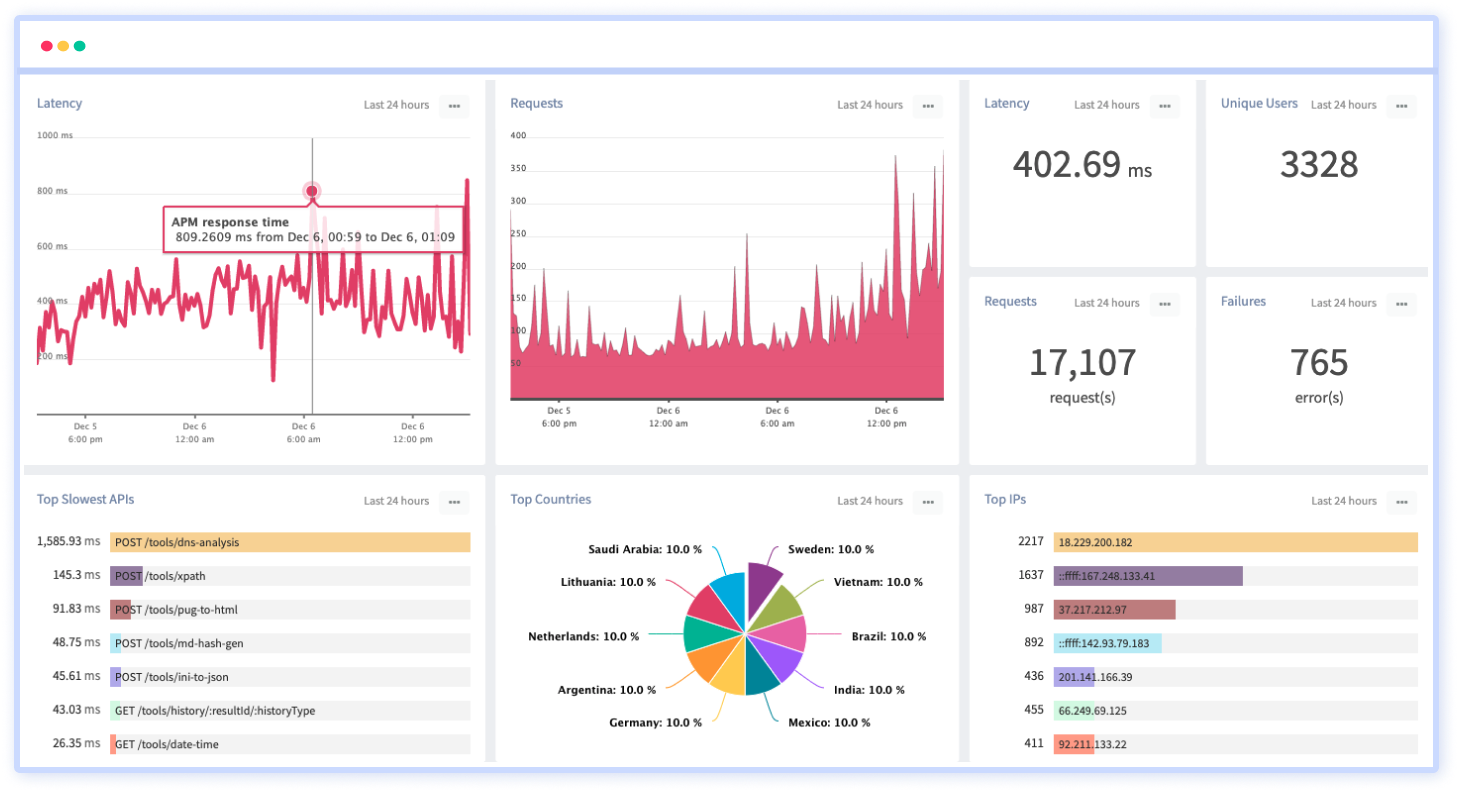
Atatus collects a wide range of data that affects the APIs in your application.
- Request and response headers, request body, custom data
- Request path, transactions, domain, users with throughput, duration and API failures
- Most-time consuming transactions
- Endpoint failure rate
- Global API usage
- Top API endpoints in your application
- API usage by SDK/User-agent
- API errors by status code
Using Atatus, avert slow or broken APIs, manage how APIs are being used, keep track of the APIs and find the one that gives you best ROI. Integrate API analytics metrics to your Slack, PagerDuty, e-Mail or VictorOps and notify your team in real-time.
Metrics to be monitored
For anyone developing and working with APIs, it is impertinent to have the right API at hand. You definitely don't want to mess up tracking the metrics later just because you choose an unrequired API. We have listed out the key metrics that you shall first look into:
1. Uptime
Uptime has always been the gold standard for measuring an applications’ availability. Measure of 9’s is a common method when assessing downtimes per year.
The 9’s show the availability of your system.ie., it is a comparative between uptime and downtime per year.
A synthetic monitoring tool such as Atatus Synthetic Monitoring can be used to test uptime by configuring probes to run on a fixed interval, such as every minute, to probe a specific endpoint such as /health or /status. This endpoint should have basic connectivity tests such as to any backing data stores or other services.

2. Latency
Implementing logging in your API integration code to track latency of each requests can help identify patterns of latency over time.
In addition to monitoring the latency of individual API calls, it's also important to monitor the end-to-end latency of your system. This includes the time it takes for a request to be made, processed, and returned to the client.
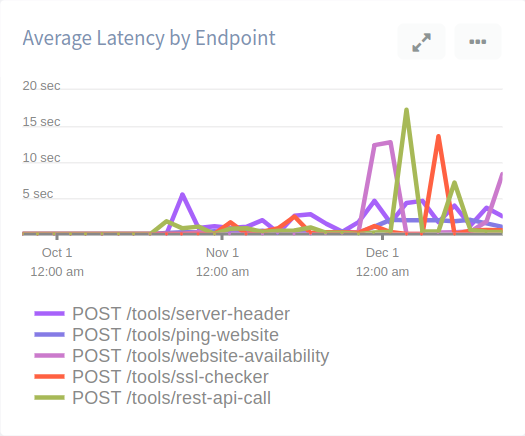
High latency can often be caused by resource constraints, such as CPU or memory utilization. Monitoring resource utilization can help you identify when your system is approaching capacity, so you can take steps to scale up before latency becomes an issue.
3. Request per minute (RPM)
RPM is a metric usually measured for HTTP or database servers. Similarly request per second (PRS) or queries per second (QPS) can also be used to measure latency related to I/O operations in databases.

In addition to a flexible pagination scheme, batching multiple requests can be an extremely helpful tool.
4. CPU storage
By monitoring the performance of your server, you can get an idea of the overall CPU usage of your API integrations. If the server is experiencing high CPU usage, it may be an indication that there are issues with your API integrations.
Logging your API integrations will allow you to see the CPU usage of the server when requests are being made to the API. This can help you identify which API is causing the problem.
5. Memory usage
As a general rule, big data queries and stream processing consume a lot more memory than production databases. Having more memory per VM will reduce the amount of time it takes for your batch query to run as it reduces checkpointing's, synchronizations on the network, and paging to disk.
It is also important to consider I/O operations and page faults when looking at memory usage. A common mistake is to configure an application only to allocate a small fraction of physical memory, causing artificially high page virtual memory thrashing.
6. Errors per minute
Like RPM, errors per minute is the process of measuring the number of API calls with 200 non-family status codes per minute.
Before tracking the number of errors, it is advisable to understand the nature of your errors. 500 errors might indicate something wrong with the code while 400 errors report mistakes on the user side.
7. API Retention
A product with high retention rate is to stay longer in the market. API retention considers post integrated customers, which means you can avoid mistaking retention rates show as part of web retention and subscription retention.
Conclusion
In conclusion, monitoring third-party API integrations is crucial for ensuring the smooth operation and reliability of your system. By implementing monitoring tools and regularly checking for issues, you can proactively identify and fix problems before they affect your users.
Additionally, having a thorough understanding of your API integrations and the data being exchanged can help you make informed decisions about which third-party services to use and how to optimize their use.
Properly monitoring your API integrations can help your business run more efficiently and provide a better experience for your users.
Atatus API Monitoring and Observability
Atatus provides Powerful API Observability to help you debug and prevent API issues. It monitors the consumer experience and is notified when abnormalities or issues arise. You can deeply understand who is using your APIs, how they are used, and the payloads they are sending.

Atatus's user-centric API observability tracks how your actual customers experience your APIs and applications. Customers may easily get metrics on their quota usage, SLAs, and more.
It monitors the functionality, availability, and performance data of your internal, external, and third-party APIs to see how your actual users interact with the API in your application. It also validates rest APIs and keeps track of metrics like latency, response time, and other performance indicators to ensure your application runs smoothly.
#1 Solution for Logs, Traces & Metrics
APM
Kubernetes
Logs
Synthetics
RUM
Serverless
Security
More

